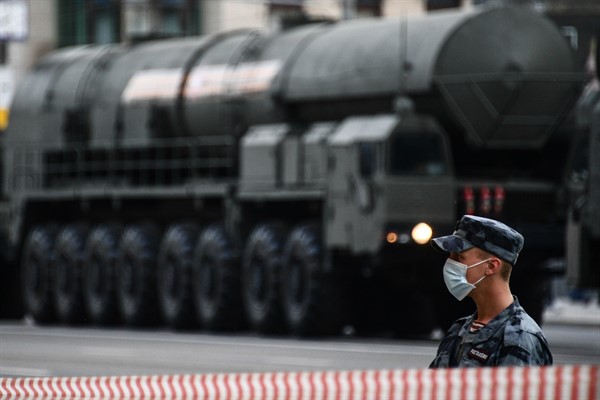For the first time ever, the Russian government has publicly released a document laying out the logic and principles underpinning its approach to nuclear deterrence. Formally titled “Fundamentals of Russian State Nuclear Deterrence Policy,” the report was approved by President Vladimir Putin and posted on the government’s official information web portal on June 2. Previous iterations of Russia’s deterrence policy, such as the one associated with the updated military doctrine it unveiled in 2010, were alluded to in public, but never published.
Why did Russia decide to publish its deterrence policy now? In part, it could be to dispel alleged Western misperceptions about when Russia might use nuclear weapons, specifically the Pentagon’s assessment that Moscow would threaten to use nuclear weapons—or actually do so—to intimidate an adversary into yielding in a major crisis. Previously referred to as “escalate to de-escalate,” U.S. officials currently describe this strategy as “escalate to win,” and have used it to justify developing U.S. low-yield nuclear weapons options to counter it.
The newly published strategy document implies that nuclear weapons deter escalation through their mere existence. Even so, the paper also warns adversaries against a range of actions that Moscow claims would raise the danger of nuclear war by presenting threats to Russia. These include deploying ballistic and cruise missiles, armed drones, missile defenses and even large concentrations of general-purpose forces—like a U.S. Army brigade—near Russian territory. Without mentioning the U.S. or its allies, the wording thereby amplifies Moscow’s familiar complaints about NATO military activities in Russia’s vicinity, the alliance’s nuclear-sharing doctrine, the U.S. global missile defense architecture, and fears of new U.S. ground-launched missiles being deployed near Russia.

